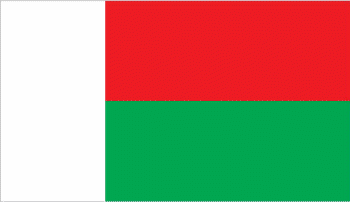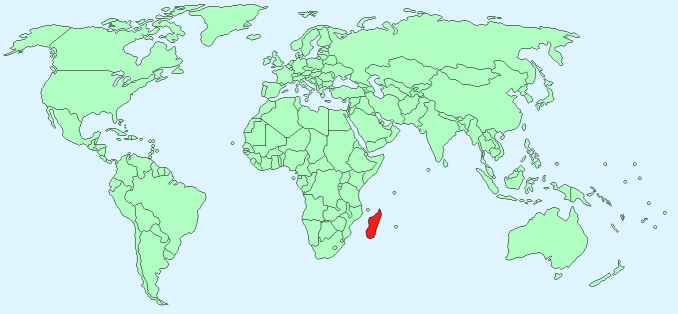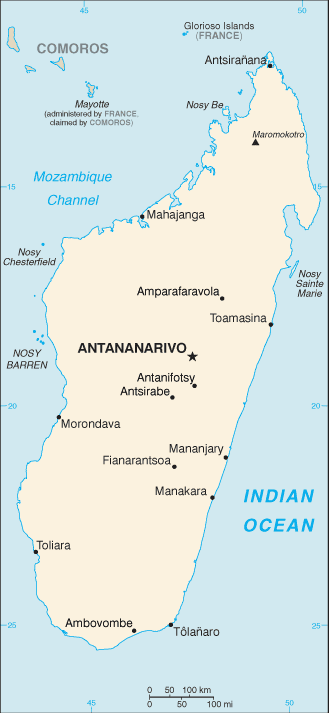Madagascar


Continent – Africa
Region – Indian Ocean Islands
Size – 587,041 km²
Geography – mountainous with coastal plain
Language – French (official), Malagasy (official), English
Religion – Indigenous 52%, Christian 41%, Muslim 7%
Monetary Unit – Malagasy ariary
Natural Resources – graphite, chromite, coal, bauxite, rare earth elements, salt, quartz, tar sands, semiprecious stones, mica, fish, hydropower
Agriculture – coffee, vanilla, sugarcane, cloves, cocoa, rice, cassava, manioc, tapioca, beans, bananas, peanuts, livestock products
Industry – meat processing, seafood, soap, beer, leather, sugar, textiles, glassware, cement, automobile assembly plant, paper, petroleum, tourism, mining

Neighbouring Countries – None
Population – 23,201,926 (2014 estimate)
Population Growth Rate – 2.62%
Average Life Expectancy – 65.2
Capital City – Antananarivo (2,487,000)
Highest Mountain – Maromokotro (2,876m)
Longest River – Betsiboka (525km)
Climate – tropical – warm winters – 15°C to 26°C and hot summers 23°C to 32°C
Yearly Rainfall – 10 cm (approx)
Plant Life – deciduous trees, mangrove, orchids, ravinala, baobabs, pitcher plant
Animal Life – lemurs including ring-tailed lemur, chameleon, geckos, turtles, tortoises,
Bird Life – vanga, couas, eagles, kestrals, falcons, owls, storks, flamingo, herons, egrets, cormorants, ibises, ducks, water hens
Harvard Reference for this page:
Heather Y Wheeler. (2015). Madagascar. Available: https://www.naturalhistoryonthenet.com/Facts_Figures/Country_Facts/madagascar.htm. Last accessed Tuesday, July 19, 2016
Facts and Figures Pages
